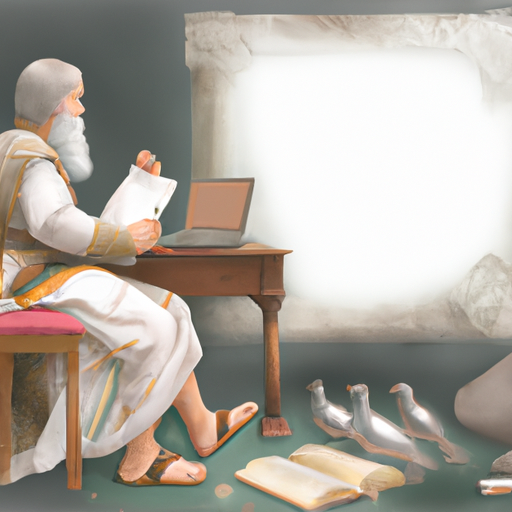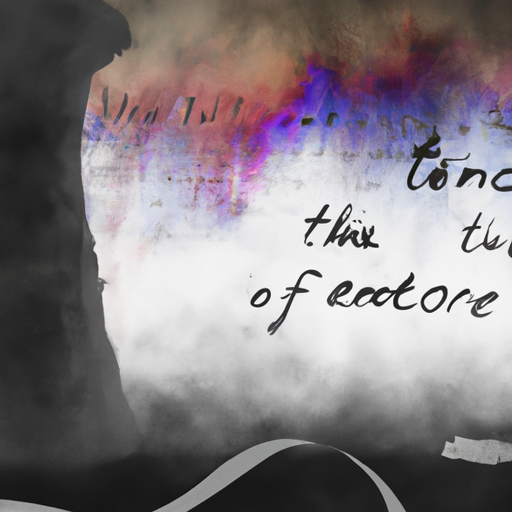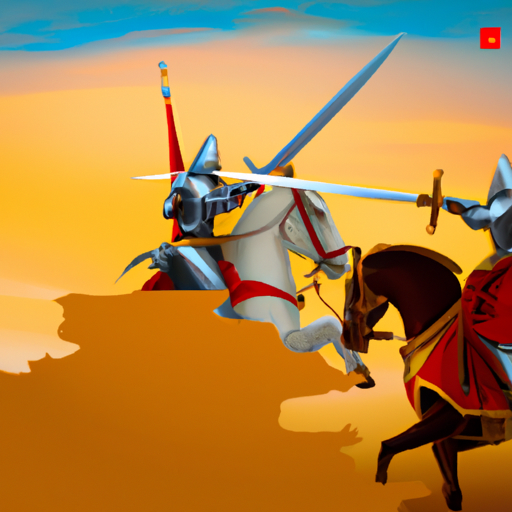The History of the God of Rainbow: Who Is He?
Unearth a vibrant tale of the deity of the rainbow! Uncover an untold chronicle of a mysterious figure from days of yore, and explore the hues that make up its enigmatic narrative. Delve into a captivating account of a being shrouded in mystery, and uncover its secrets!

Mysterious and captivating, a being of the rainbow has been woven into the fabric of history for generations. Legends and myths speak of its power to create rainbows with its might, while many cultures view it as a messenger from the gods bringing joy and blessing. It is often portrayed in beautiful forms with wings adorned in colorful feathers or jewels, representing the spectrum of the rainbow.
This entity has taken on various guises throughout time – sometimes male, sometimes female – associated with fertility and abundance, or as a protector against evil spirits. Its influence can still be felt today in art, literature, music; an ever-present reminder of its significance through time that encourages us to admire its beauty even more.
.
Introduction

Dating back to the time of Ancient Greece, a god of rainbow was believed to have been responsible for the manifestation and preservation of its majestic presence. The messenger of gods and goddesses, Iris, was said to traverse between heaven and earth atop a multi-hued cloud or arc. Additionally, this being was also linked with communication, messengers, and new beginnings. In some societies, fertility and life-giving rains were attributed to the mythological figure as well.
– History of the God of Rainbow in Ancient Mythology
Mystically, a bridge between gods and mortals has been believed to be embodied in the colorful arcs of a rainbow. In Greek mythology, Iris was said to be the goddess who traversed this bridge, flying on her multicolored wings between Olympus and Earth with messages from Zeus. Meanwhile, in Norse mythology, Bifröst is described as a burning rainbow bridge that links Midgard (Earth) with Asgard (the realm of gods), guarded by Heimdallr who would blow his horn at Ragnarok – marking the end of all things. Even in Celtic mythology, rainbows are seen as symbols of hope and good fortune; leprechauns were known for their mischievousness and were said to have hidden pots of gold at the ends of rainbows. Throughout history, the God of Rainbow has been an iconic figure in many cultures – its mythical power transcending time.
– Historical Representations of the God of Rainbow
Throughout the ages, a figure of myth and legend has been intertwined with history – the God of Rainbow. Ancient Greece knew this deity as Iris, messenger of the gods who traversed realms on her bridge of colors. Norse mythology held Heimdallr as guardian of Bifrost Bridge, an enchanted rainbow connecting Asgard and Midgard. In India, Indra was sometimes depicted riding a chariot pulled by seven horses that symbolized the spectrum of hues.
In Christianity, God’s covenant with Noah after the Great Flood is symbolized by a bow in the clouds (Genesis 9:13-17). The Talmud also speaks of a divine rainbow protecting Noah during his journey aboard the Ark. Chinese stories tell how rainbows were created by deities or immortals; Yuanshi Tianzun’s bridge made from five-colored stones so people could cross rivers safely; Nüwa cutting off her own feet to make amends for creating mankind too quickly and then using five-colored stones to mend Heaven’s broken pillar – creating a stunning multicolored arc in the process.
The God of Rainbow has been represented through time in many ways but its core meaning remains true: life is precious and should be cherished.
– Legends and Folklore Surrounding the God of Rainbow
Mysterious and captivating, the God of Rainbow has been a part of ancient cultures for centuries. From Greece to India, this deity – also known as Iris – has been linked to rainbows, storms, good luck and protection against evil forces. Legends surrounding the god or goddess vary greatly depending on the culture, with some believing they can grant wishes while others think they bring bad luck if angered. Described as having wings and wearing a variety of colorful garments, Iris is often depicted as an animal such as a white horse or red bird depending on their moods. Despite its perplexing powers and symbolism, the God of Rainbow continues to intrigue people today with its fascinating history.
– Cultural Significance of the God of Rainbow Throughout History
Throughout time, the God of Rainbow has been a beacon of optimism and hope to many societies. In Greek mythology, this deity was associated with Zeus, the god of thunder. The Bible includes mention of the God in Genesis as a sign from God that He would never again flood the world. In Chinese culture, Yue Lao is attributed with bringing luck in matters of love and marriage. Native American folklore sees this figure as a powerful protector who brings rain for nourishment and abundance.
Hinduism reveres Indra, known as the God of Rainbow, as one of its most important gods. He is said to possess great strength and power and was believed to have created lightning bolts that could fell foes. In Japan, he is often depicted as a white dragon carrying a bow made from seven different gems representing each color in the rainbow.
The symbolism behind the God of Rainbow has endured through history due to its message of hope during adversity. It serves as an emblem for peace after conflict or war, joy following sorrow, faith after doubt and love conquering hate. Additionally, it serves to remind us that no matter how dark things may appear at times, there will always be something beautiful on the other side if we remain optimistic and hopeful.
– Impact of the God of Rainbow on World Religions Throughout History
Throughout the ages, the God of Rainbow has had a far-reaching effect on religious practices around the world. In ancient times, this deity was seen as an emblem of optimism and affluence, with its presence in many cultures from the Mayans to the Native Americans. It was also associated with fertility and abundance, leading to its veneration in numerous fertility cults.
In Christianity, Noah’s Ark and the rainbow following it are well known stories. This rainbow was viewed as a sign from God that he would never again flood the earth, and has been interpreted differently over time. For some Christians, it serves as a reminder of God’s mercy and grace; for others, it is an illustration of how faith can bring about harmony between different people and cultures.
The Hindu religion also makes reference to the God of Rainbow; often referred to as Indra or Varuna. He is typically depicted as a powerful being who brings rain during droughts and offers protection against evil forces. Additionally, Hindu mythology states that when Indra sends down his seven-colored bow (the rainbow), it brings good luck to those who witness it.
The Jewish faith acknowledges the significance of this god in its teachings too. According to Jewish tradition, when Moses brought down two tablets containing the Ten Commandments from Mount Sinai, he saw a rainbow in front of him which symbolized God’s promise to never again destroy mankind with a flood. This symbol has since been used by Jews throughout their history as an indication of hope; reminding them that even in dark times there is still light at the end of the tunnel.
It is clear that this deity has had an immense influence on global religions over time. Its imagery has been employed by various societies to represent desire, bounty and shelter from malevolent forces—all fundamental elements for any belief system aspiring towards peace and understanding among different populations worldwide.
conclusion

Awe-inspiring and mysterious, the figure of the rainbow’s deity has been a part of many ancient civilizations. From Greece to India, from Norse mythology to beyond, various deities have been connected to the resplendent spectrum of colors. In Ancient Greece, Iris was venerated as the goddess of rainbows and a messenger of the gods. Hinduism paints Indra atop a chariot pulled by seven horses, alluding to the seven colors that make up a rainbow. Heimdallr is also believed to be associated with rainbows in Norse mythology.
.
Some questions with answers
Q1. What is the history of the god of rainbow?
A1. In Greek mythology, Iris is the personification and goddess of the rainbow and messenger of the gods. She is also known as one of the goddesses of the sea and sky. Her father Thaumas married Electra, a daughter of Oceanus.
Q2. How did Iris become associated with rainbows?
A2. According to some sources, Iris’ connection to rainbows came from her swiftness; she was able to traverse the world with incredible speed, just like a rainbow appears in an instant and then fades away quickly. Other sources say that it came from her ability to bridge gaps between heaven and earth, similar to how a rainbow connects both realms together in its arching shape.
Q3. Is Iris still worshipped today?
A3. Although not widely worshipped today, there are still some people who honor the goddess Iris by offering her flowers or other gifts at springs or rivers where a rainbow might appear.
Q4. Was Iris ever mentioned in any ancient texts?
A4. Yes, Iris was mentioned several times in ancient Greek literature such as Homer’s Iliad and Odyssey, Hesiod’s Theogony, Apollodorus’ Bibliotheca, Pindar’s Odes, Euripides’ plays and many others.
Q5. What is the symbolic meaning behind Iris?
A5. The symbolic meaning behind Iris is communication and messages from beyond our realm to ours; she serves as a bridge between both worlds so that we can receive messages from divine forces or deities above us on Earth below us here on Earth




